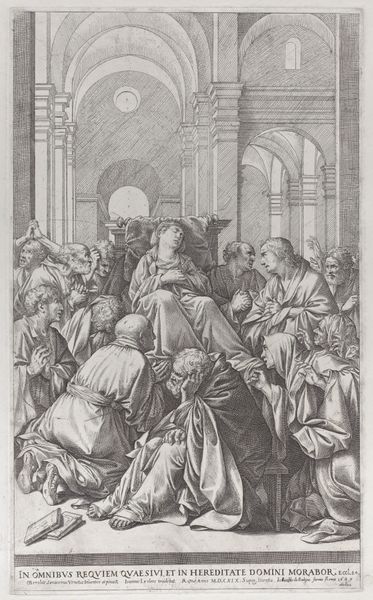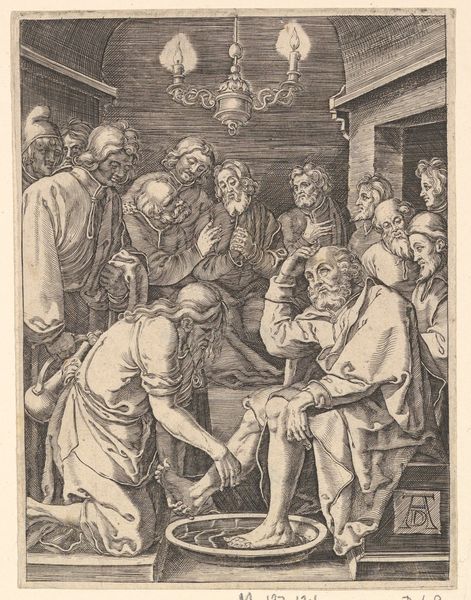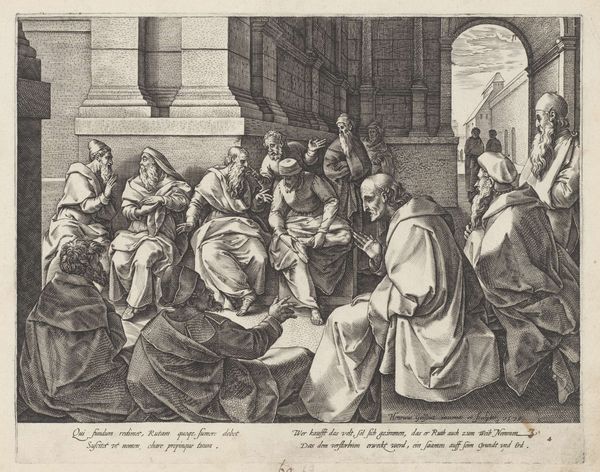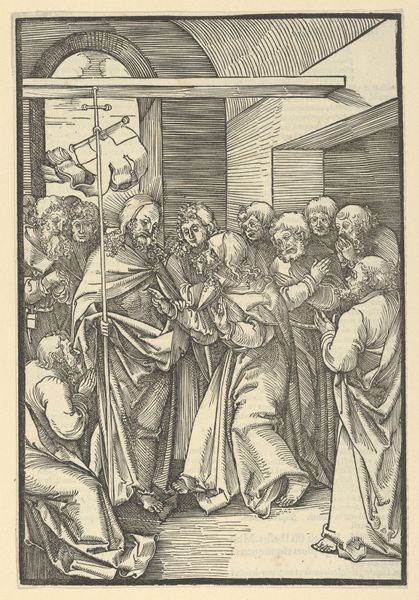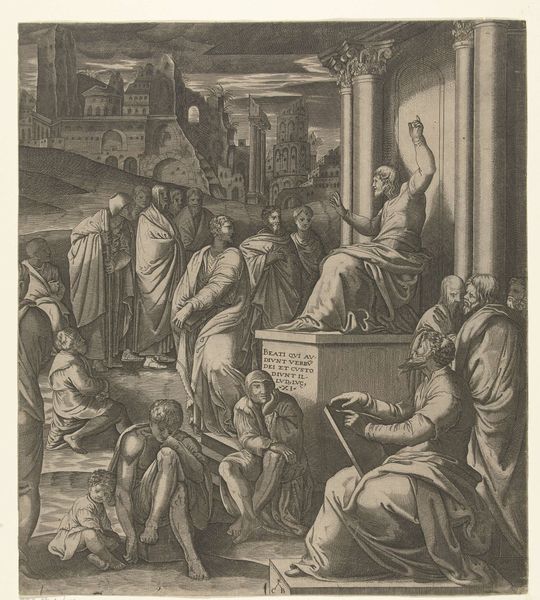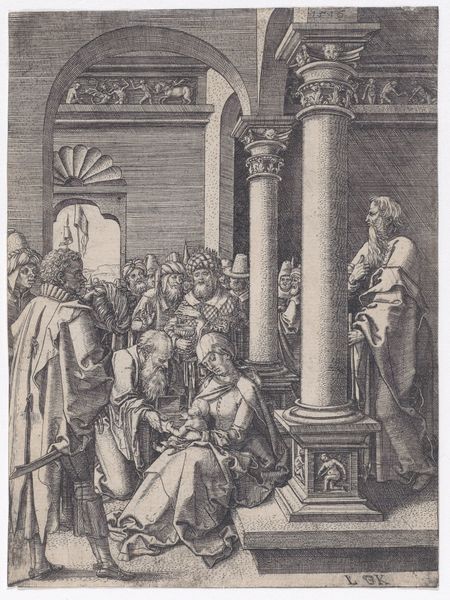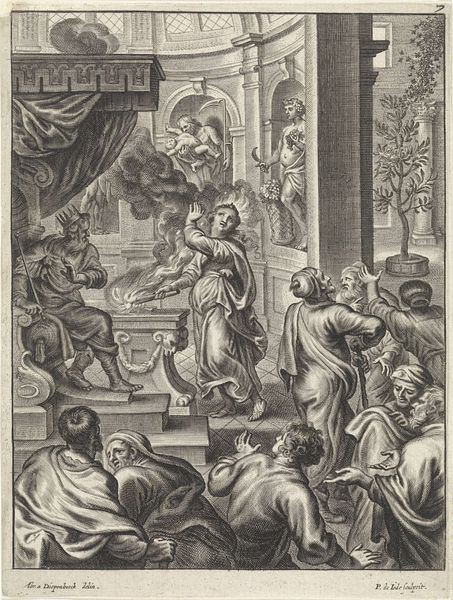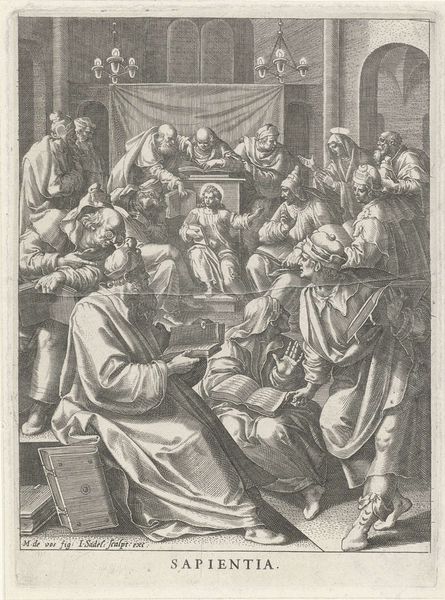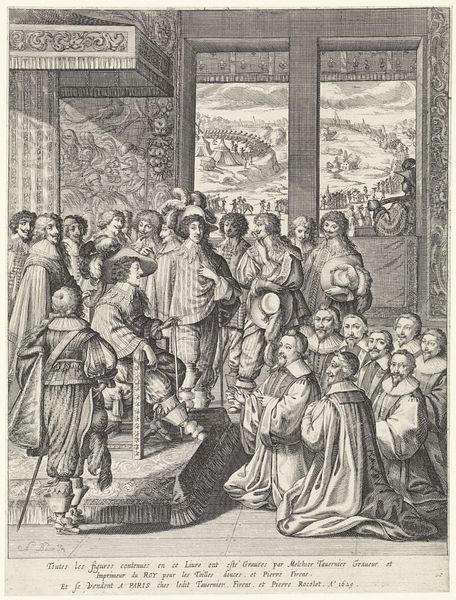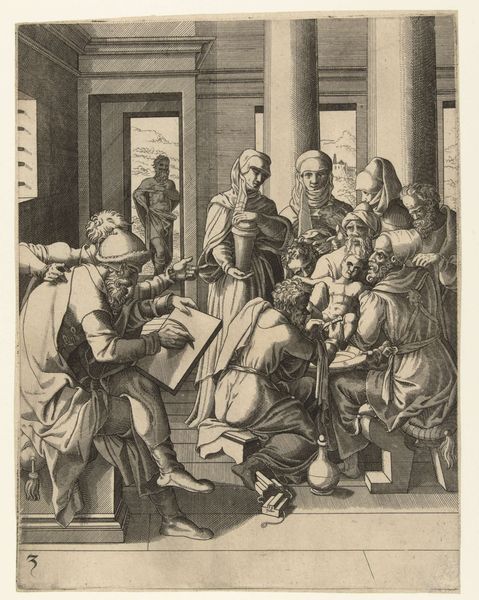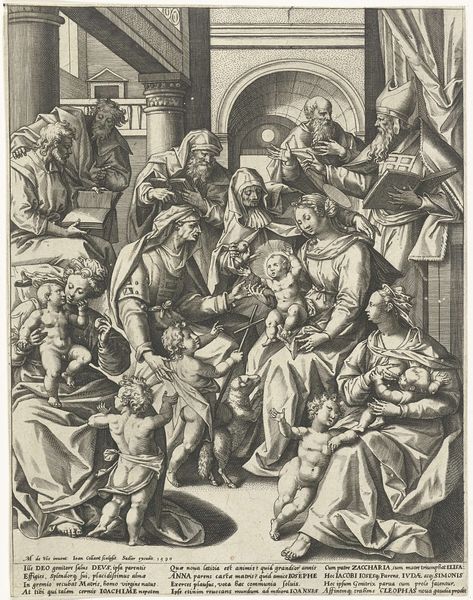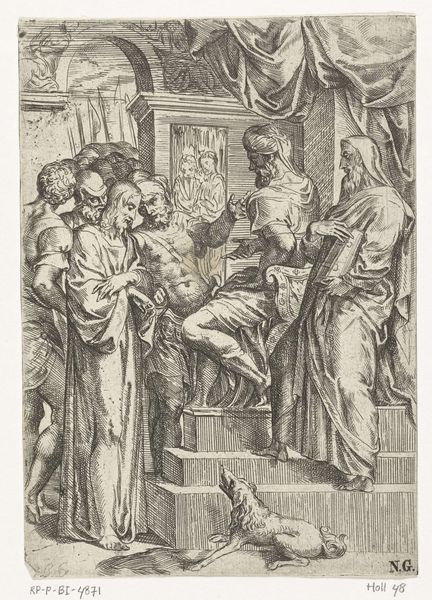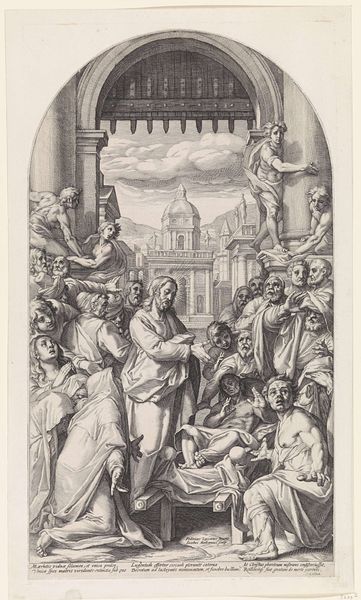
print, engraving
# print
#
old engraving style
#
figuration
#
history-painting
#
northern-renaissance
#
engraving
Dimensions: height 256 mm, width 188 mm
Copyright: Rijks Museum: Open Domain
Curator: This is an engraving from 1598 called "Christ Blessing the Children," now housed in the Rijksmuseum. Johan Barra created it. Editor: Wow, it feels crowded, almost claustrophobic. All those robes and bodies packed into that architectural space… and so many babies! It’s a surprisingly tender moment captured in a somewhat rigid style. Curator: The engraving medium is critical here; its reproductive capabilities allowed for broader dissemination of religious iconography. Think about it – access to spiritual imagery expands beyond the wealthy patrons of paintings. It democratizes the message. Editor: Yes, and that stark black and white really amplifies the emotional intensity. You notice the fine lines and all those tiny details used to model the forms. It’s like everyone is clamoring to get closer to the light, to Christ. And I keep getting pulled back to the tiny little hands reaching out. There's a raw humanity to the poses in tension with this polished setting, no? Curator: Absolutely, and it invites us to reflect on the material conditions of 16th-century printmaking. Consider the engraver’s labor and skill – the repetitive, precise movements required to create these intricate lines. That labor then gets abstracted into spiritual capital via this religious image. The final composition’s rigid nature feels in tune with a cultural ethos of the time too. Editor: It is interesting how it takes something like an old print to put modern labour issues in perspective. All that intensity from Barra! What does it all mean, our engagement with artwork such as this one? Curator: For me, understanding the printmaking process provides an avenue to understanding the society that produced and consumed it. Editor: Right. It really highlights this tension between mechanical reproduction and sincere artistic or emotional intention. It makes you wonder, where did that emotionality ultimately reside: the engraver’s workshop, or in the hearts of the people who received and interpreted these images? Food for thought!
Comments
No comments
Be the first to comment and join the conversation on the ultimate creative platform.
